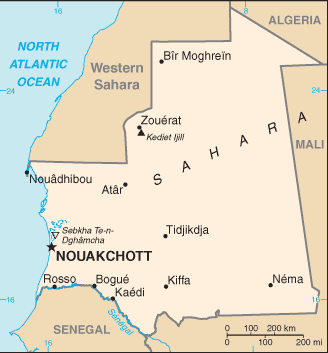By NewsDesk @bactiman63
The northwestern African country of Mauritania is reporting an outbreak of Rift Valley fever (RVF) where some three dozen confirmed cases have been reported.

As of Oct. 5, 2020, a total of 88 samples of suspected cases have been sent to the National Institute for Public Health Research (INRSP): 36 were positive (by PCR and Elisa), 46 were negative. Six samples are still pending for results.
Confirmed cases have been reported in 9 regions (Adrar, Assaba, Brakna, Hodh Elchargui, Hodh El Gharby, Tagant, Trarza, Gorgol et Noukchott Sud).
13 total deaths have been reported from the confirmed cases, for a case-fatality of 36 percent.
The continuous surveillance of RVF at the animal level has confirmed the outbreaks in the Assaba, Tagant, Brakna, Trarza and Hodh Elgharbi regions. The results of 165 samples taken in the period from September 16 to 23, 2020, show that 33 camelids, 4 small ruminants and 6 cattle were positive.
According to WHO, Rift Valley Fever (RVF) is caused by a virus transmitted by mosquitoes and blood feeding flies that usually affects animals (commonly cattle and sheep) but can also involve humans. In humans the disease ranges from a mild flu-like illness to severe hemorrhagic fever that can be lethal. When livestock are infected the disease can cause significant economic losses due to high mortality rate in young animals and waves of abortions in pregnant females.
Subscribe to Outbreak News TV on YouTube
The majority of human infections result from direct or indirect contact with the blood or organs of infected animals. The virus can be transmitted to humans through the handling of animal tissue during slaughtering or butchering, assisting with animal births, conducting veterinary procedures, or from the disposal of carcasses or fetuses. Certain occupational groups such as herders, farmers, slaughterhouse workers and veterinarians are therefore at higher risk of infection.
- Outbreak News This Week Episode 1: COVID-19 lockdowns, India coronavirus deaths, research
- SARS-CoV-2 ‘survivability’ up to 28 days: Research
- Philippines infectious disease updates: COVID-19, measles, dengue
- Sudan: Chikungunya outbreak prompts ‘State of Emergency’ in West Darfur
- Japan records more than 4,000 syphilis cases in 1st 9 months of 2020
- Taiwan reports 60th locally transmitted dengue case

